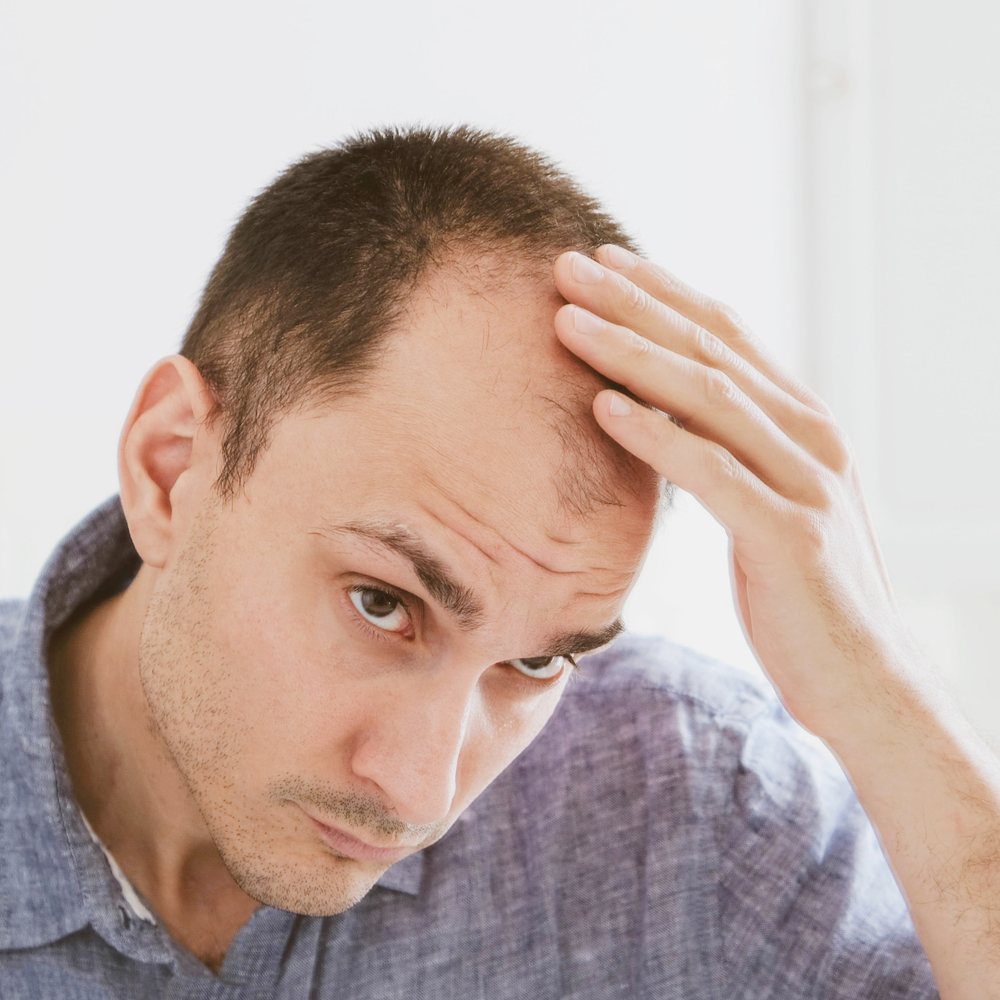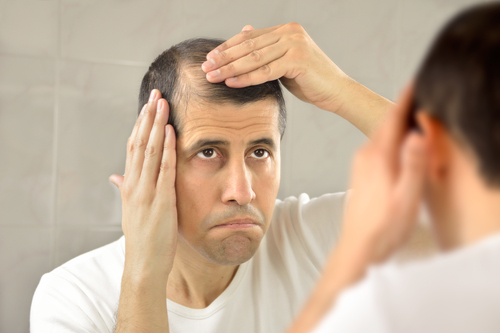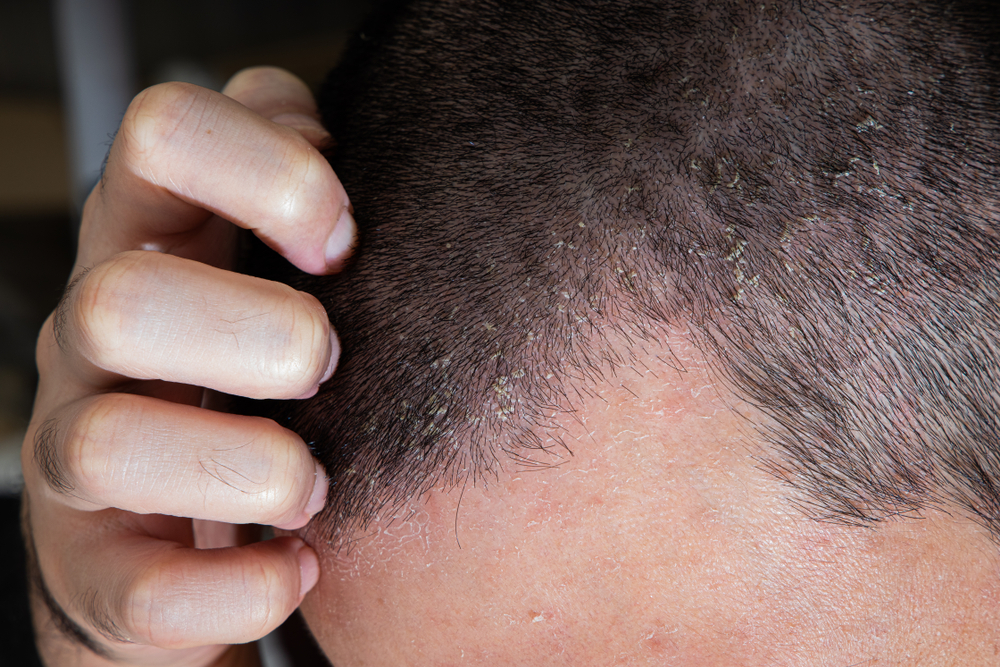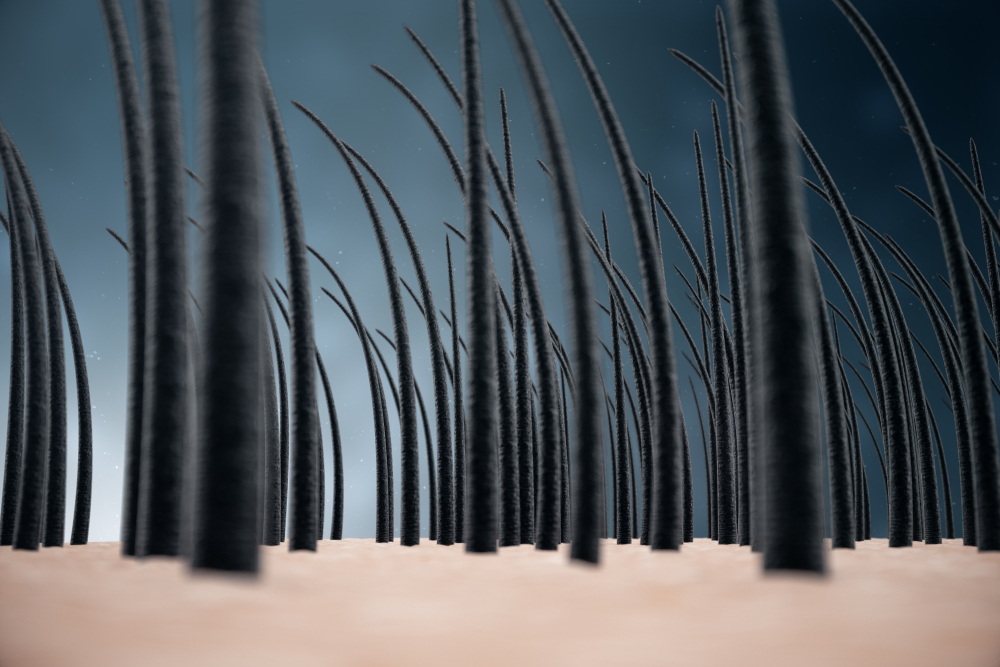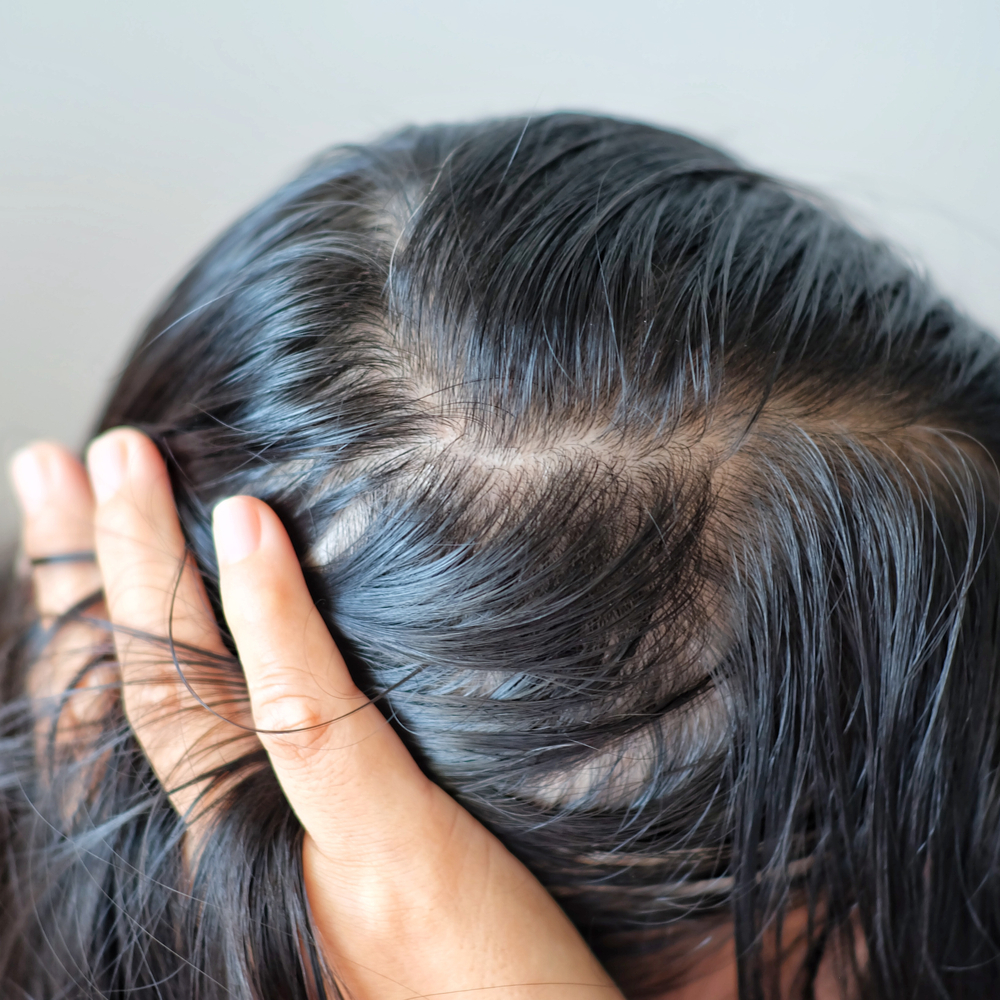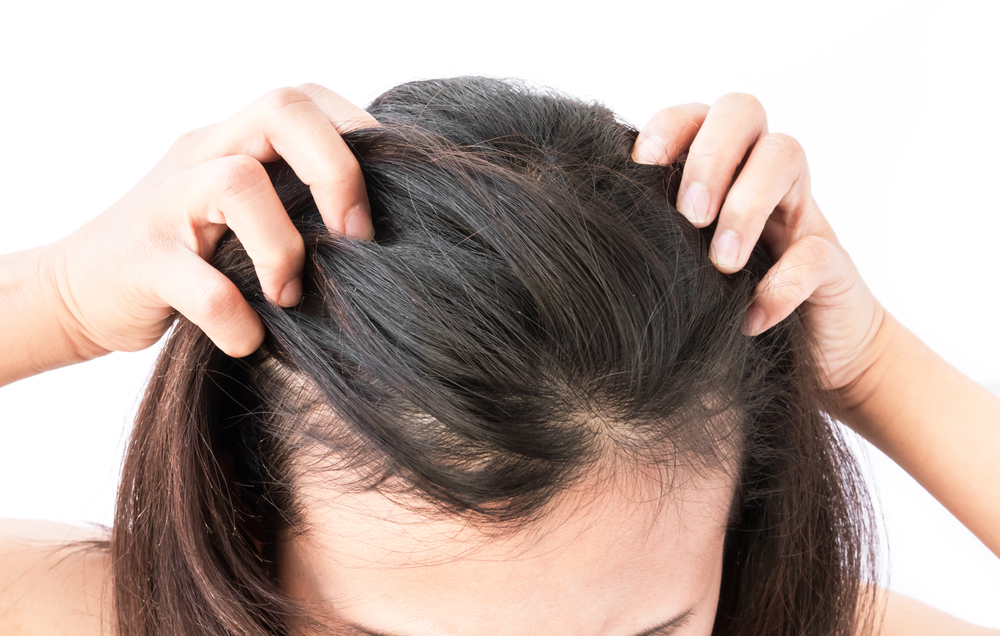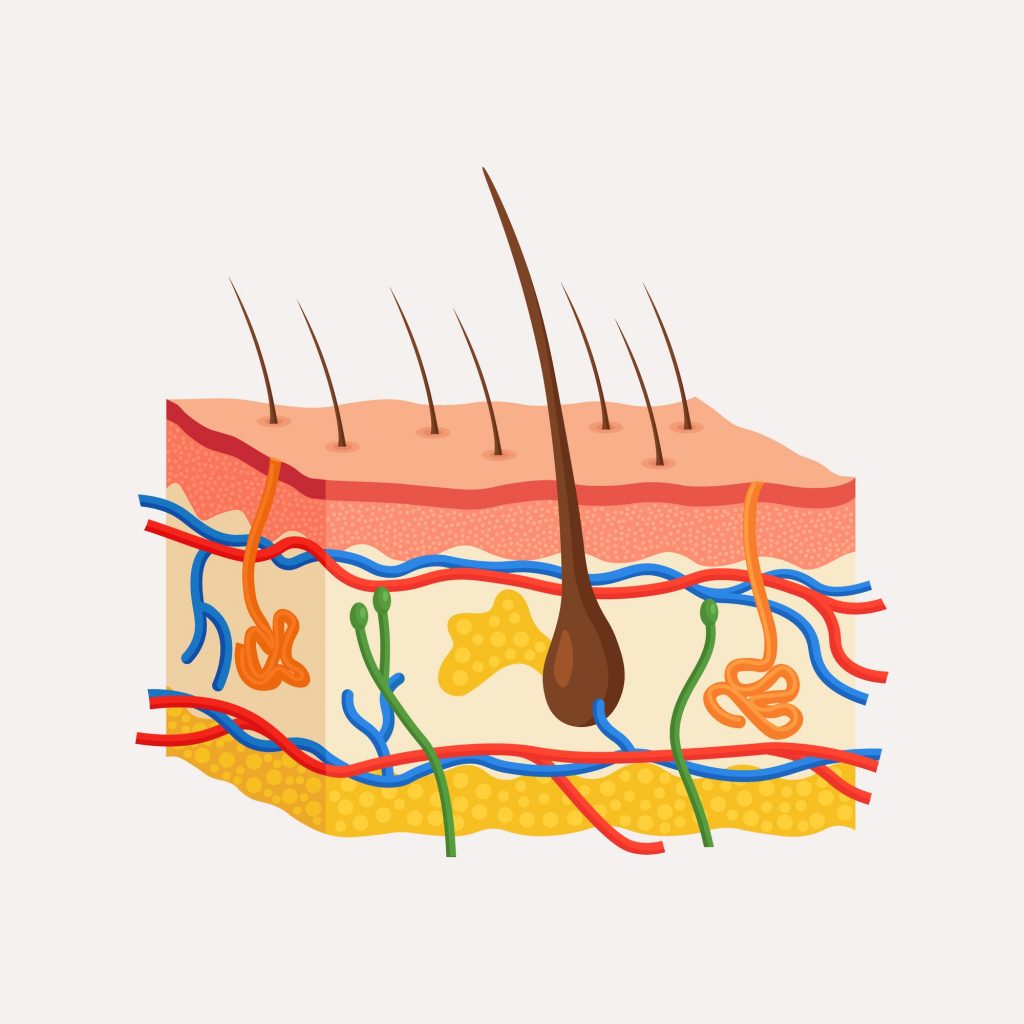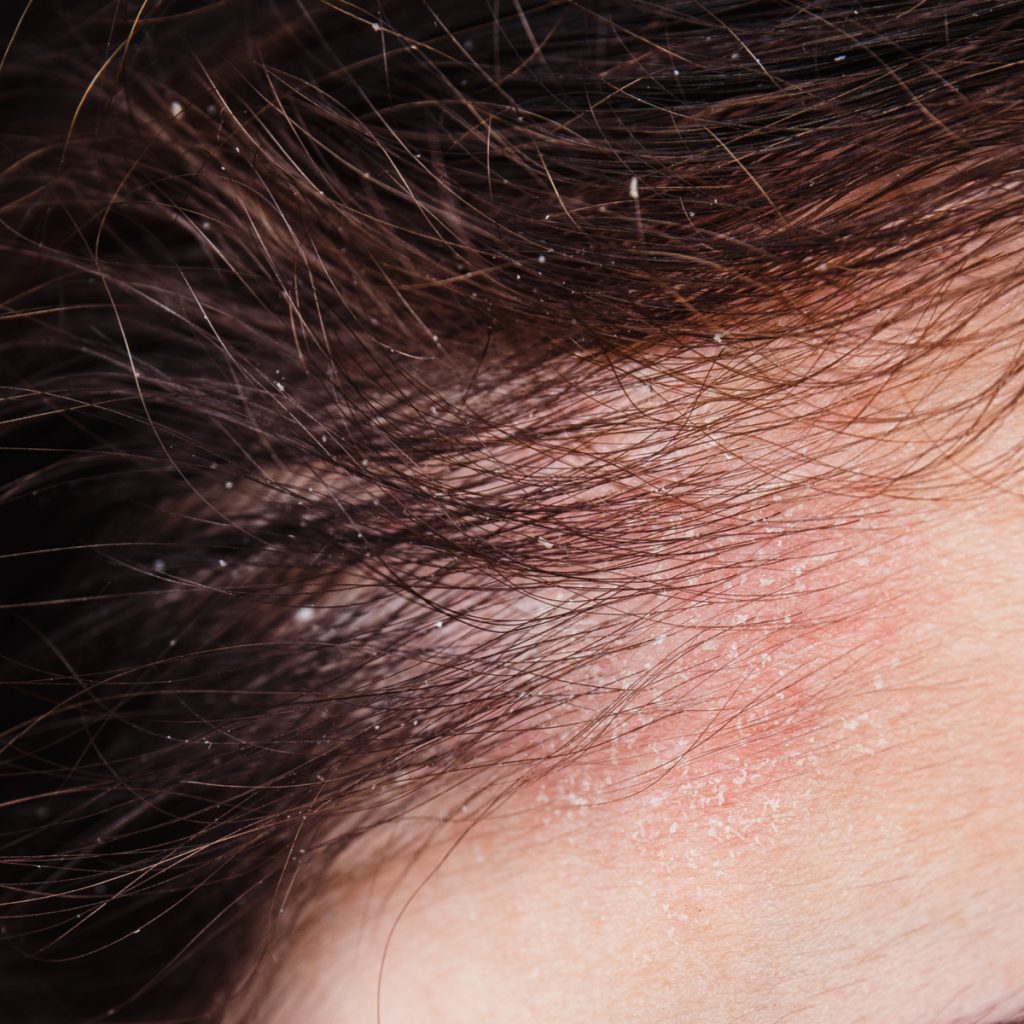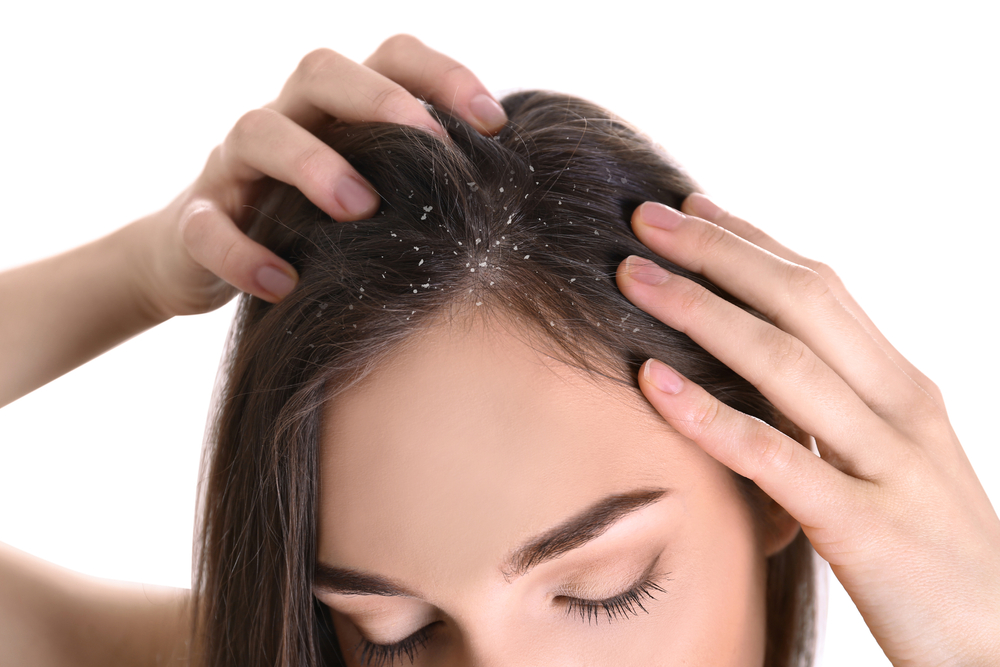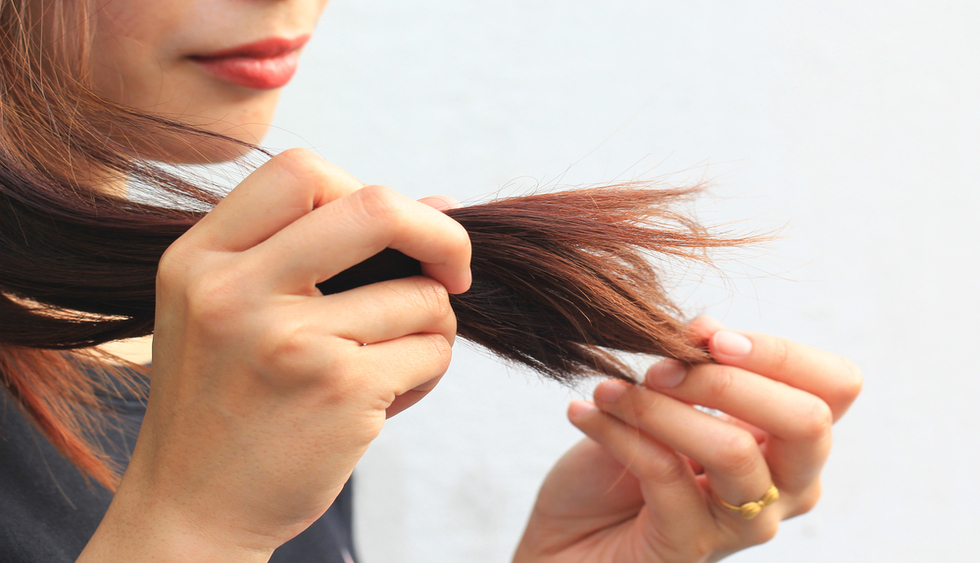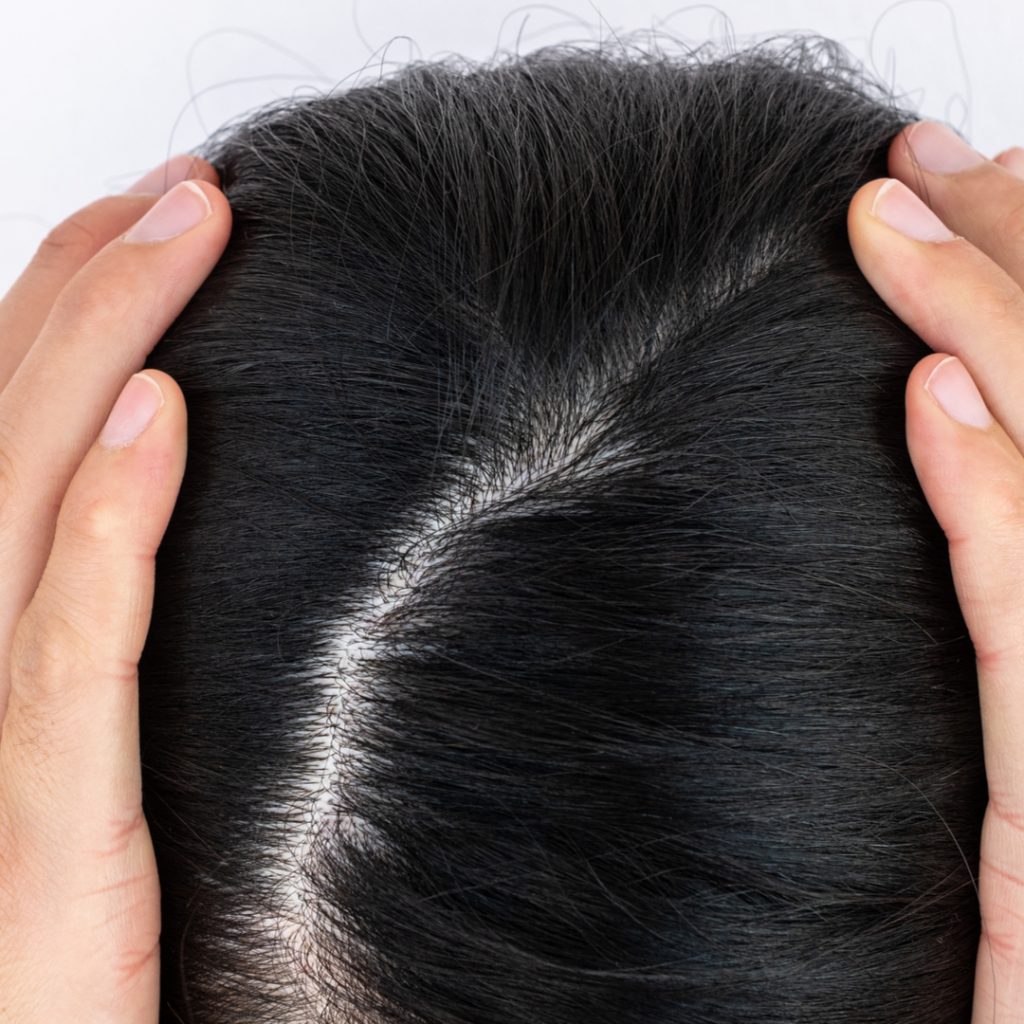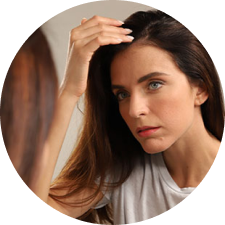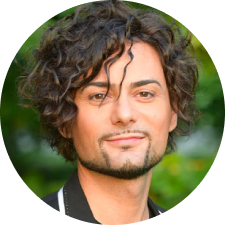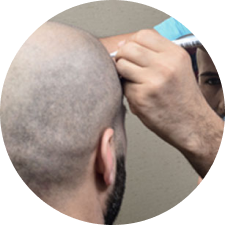- Accueil
- Domaine scientifique - Problèmes capillaires | CRLAB
Science Capillaire: Comprendre & traiter
PUBLICATIONS SCIENTIFIQUES
Collaboration avec le Professeur Marco Toscani et le Docteur Pasquale Fino, Chaire de Chirurgie Plastique, Reconstructive et Esthétique – Centre Hospitalier Umberto I, Université “La Sapienza” de Rome.
Androgenetic alopecia is the most common type of hair loss and affects the majority of white men, with varying degrees of seriousness. It is less frequent in other ethnic groups. Often it can be associated with a family history of baldness, but the absence of other affected family members does not exclude the diagnosis. The condition is characterized by progressive hair loss in the crown area, the front hairline and the temporal area.
En savoir plusSeborrheic hair loss is a form of premature hair loss that generally afflicts men in their youth (onset between 20 and 30 years of age), mainly affecting the frontal region and the crown. The cause, as the name of the condition suggests, is related to an excess production of sebum that provokes or accelerates hair loss.
En savoir plusA shedding of hair is considered physiologically normal when hair loss is limited to around one hundred hairs per day. During an individual’s life hair grows, falls out and regrows around twenty times. Each cycle, especially for females, may last up to six years and if hair loss is found within this time frame, it is considered absolutely physiological.
En savoir plusSeborrheic dermatitis is a very common scalp condition characterized by the presence of yellow and oily flakes on the skin. It is associated with erythema, small scaly, and intense itching. Seborrheic dermatitis is a well-known condition but is still not easily identifiable. Many men and women starting from puberty have oily, greasy, shiny and thickened skin with large hair follicles, especially noticeable around the nose and mouth, forehead, torso, scalp (affected by so-called oily dandruff).
En savoir plusScalp pain and irritation (or trichodynia) are pathological conditions that affect both women (in a greater percentage) and men (in a lower percentage). The pain felt on the scalp, spontaneous or caused by treatment, and in particular around the roots of the hair, may be more or less intense, alternating at times between periods of disappearance, associated with burning, tingling or itching.
En savoir plusA hair follicle is a formation of epidermal origin, anchored in the dermis and consisting of a hair and its sheath. The formation of hair follicles occurs early. They begin to appear as early as the second month of gestation. These follicles will continue to form for the entire duration of the pregnancy. At birth, the baby will indeed have the entire supply of follicles with which it was genetically equipped and from this moment on, no others will form.
En savoir plusOn désigne par hyperhidrose une production excessive de sueur, sur toute la surface du corps ou seulement sur certaines zones (en particulier le cuir chevelu, la paume des mains la plante des pieds).
En savoir plusHyperseborrhea or hypersecretion of sebum is simply a scalp problem due to an excessive production of sebum caused by hyperactivity of the sebaceous glands. Immediate symptoms of hyperseborrhea are scalp itchiness and pain. However, a later symptom is hair loss.
En savoir plusThe sebaceous glands are glands that secrete sebum, an oily, acidic substance with a pH of 3.5. They are connected laterally to the hair follicle. Sebaceous glands are found with a density of approximately 100/cm2 throughout all areas of the skin. In the human body, they are located across the entire surface of the skin, except for the palms of the hands and the soles of the feet.
En savoir plusPsychogenic alopecia is a type of hair loss related to stress. Though not yet scientifically explained, this connection is well-known in the experience of those working with the problem. In addition to stress, other causes are personality disorders, states of anxiety and depression, all of which are conditions of acute or chronic stress.
En savoir plusLa peau sèche, ou astéatose, est un problème de cuir chevelu consécutif à une carence en lipides. Cette anomalie, souvent associée à une sévère déshydratation, est due aussi bien à des causes internes qu'à des facteurs externes.
En savoir plusDandruff is a scalp condition that usually arises between the ages of 10 and 25. It may improve between the ages of 45 and 55 or may continue during old age. Its cause is a result of an accelerated turnover of epidermal cells, which following an increase in migration speed, are unable to reach complete maturity before detaching. Whitish-yellow flakes (masses of corneum cells) form and detach, gathering in patches or often spreading evenly across the scalp.
En savoir plusLa psoriasi è una frequente dermatosi cronica eritemo-squamosa con squama tipica (psoriasica), circoscritta o diffusa. La psoriasi è un problema del cuoio capelluto non annoverata tra le cause che comportano la caduta dei capelli. La psoriasi è un’anomalia annoverata tra le malattie della cute. Essa può insorgere a qualsiasi età ed ha la stessa incidenza sia negli uomini che nelle donne. Le placche o scaglie forforose (simili a quelle della forfora) possono essere molto varie sia nello spessore che nell’estensione e si staccano facilmente. Sotto di esse la pelle, a causa dell’irritazione, si presenta infiammata e di colore rosso vivo.
En savoir plusThe hair on our bodies has a particular structure and is divided into thin and thick hair. Thin hair, also called lanugo or vellus, is located on all skin surfaces except for the palms of the hands and the soles of the feet. Thick hair, also called terminal hair, is dark and located only in some areas such as the scalp, the armpits, the pubic area, the beard area in the case of men, etc…
En savoir plusThe scalp is an ultra-specialized area of the skin, where hair is anchored. Like other hair, also the hair on the scalp originates from a hair follicle, called a bulb.Il cuoio capelluto è tenacemente adeso, con interposizione di scarsissimo tessuto connettivo, alla galea capitis, aponeurosi che riveste direttamente le ossa del cranio.
En savoir plusSome parameters and characteristics should be taken into consideration when assessing hair types and morphologies: shape, density and appearance. The appearance of hair, in the form of lanugo, occurs during the fourth month of pregnancy.
En savoir plusNos solutions autour de la perte de cheveux
TROUVEZ VOTRE CENTRE CRLAB
Prenez rendez-vous dans l'institut le plus proche. Nos experts vous guideront vers la solution la plus adaptée.
TROUVER UN CENTRERÉSERVEZ UNE CONSULTATION EN INSTITUT
Bénéficiez d'un diagnostic complet et d'un accompagnement personnalisé dans l'un de nos centres CRLAB.
PRENDRE RENDEZ-VOUSRÉSERVEZ UNE CONSULTATION VIDÉO
Échangez à distance avec l'un de nos experts et recevez une première orientation personnalisée.
PRENDRE RENDEZ-VOUSTrichologie
Les soins trichologiques CRLAB offrent des résultats cliniquement prouvés. Suivant un protocole personnalisé, les traitements rééquilibrent le cuir chevelu, traitent les problématiques à la source et stimulent les fonctions naturelles. Des résultats visibles pour des cheveux plus forts, plus denses, et un cuir chevelu sain, durablement.
EN SAVOIR PLUSProthèse Capillaire
Le système CNC de CRLAB est un dispositif médical breveté, réalisé sur mesure en Italie. Intégrant des cheveux naturels vierges, il recrée fidèlement l'apparence du cuir chevelu et l'implantation capillaire. Une alliance de technologie de pointe et de savoir-faire artisanal, conçue pour répondre à l'alopécie partielle ou totale.
EN SAVOIR PLUSGreffe Capillaire
La greffe est une solution médicale permettant de restaurer durablement la densité capillaire. Chez CRLAB, elle est réalisée en Italie par nos médecins experts, dans un cadre médical certifié. Une approche globale – diagnostic, intervention, suivi – pour un résultat naturel, sûr et personnalisé.
EN SAVOIR PLUS English
English  Italiano
Italiano  Português
Português  Español
Español 